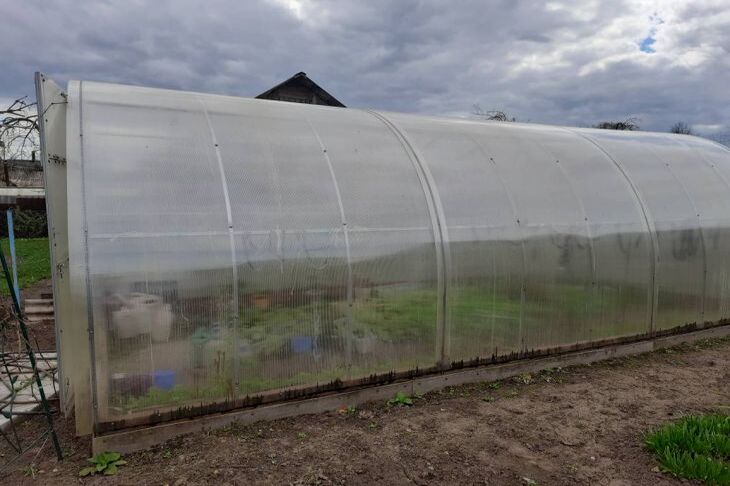Experienced gardeners know that the success of growing plants in a greenhouse largely depends on its correct placement on the site.
Lighting is the key to success
Sunlight plays a critical role in plant growth. Ideally, the greenhouse should be positioned to receive maximum light throughout the day.
South or southeast orientation is the best choice. It is important to avoid shady areas, such as those that may be shaded by tall trees or buildings.
Wind protection
The greenhouse must be protected from strong winds that can damage its structure or even tip it over.
It is best placed behind natural barriers such as a fence or hedge, or in a corner of the property where the wind will pass by rather than directly at it.

Availability of water and fertilizers
Ease of access to water and fertilizers also plays an important role.
The greenhouse should be located close to a water source, whether it is a well, borehole or central irrigation system.
This will make watering plants much easier and save the gardener's time.
Drainage and soil quality
Soil quality and its drainage properties are also an important factor.
The greenhouse should not be located in a lowland where excess water can accumulate, which leads to root rot.
It is best to choose a place with good drainage, where the soil dries quickly after rain.
Ease of use
The location of the greenhouse should be convenient for daily use.
You shouldn't place it too far from your home or from the main storage area for your tools, so as not to waste a lot of time moving it around.
It is also important that the greenhouse has easy access for transporting crops and materials.
Influence of surrounding structures
Neighboring buildings, such as a house or garage, can affect the microclimate around the greenhouse.
For example, walls can reflect the sun's rays, creating additional heat, or, conversely, create shadow. These factors must be taken into account when choosing a location.
Future Prospects
The placement of the greenhouse should take into account future plans for the development of the site.
If you are planning to expand your garden or build new structures, it is better to plan ahead for a greenhouse so that it does not end up in an awkward position in a few years.
Interaction with other plants
Some plants can interact with each other through their root system or the air.
If you plan to plant other crops near the greenhouse, you need to consider their compatibility.
For example, some plants may attract pests that then migrate into the greenhouse.
Aesthetics of the site
Although functionality is important, aesthetics should not be forgotten. A greenhouse can be not only a useful tool for gardening, but also a decoration of the site.
It can be placed so that it harmonizes with the landscape design, creating a pleasant view from the windows of the house or veranda.








